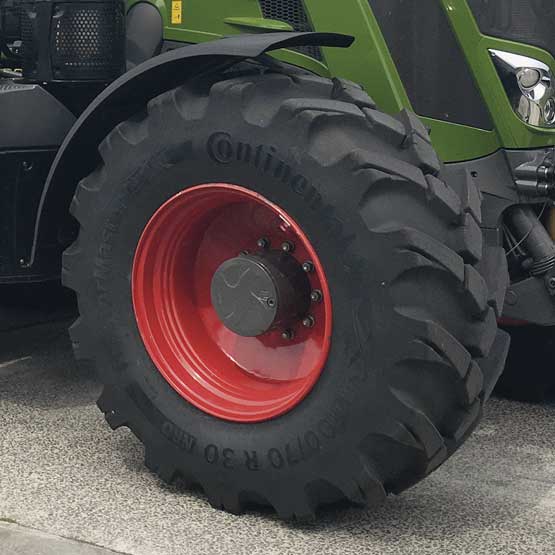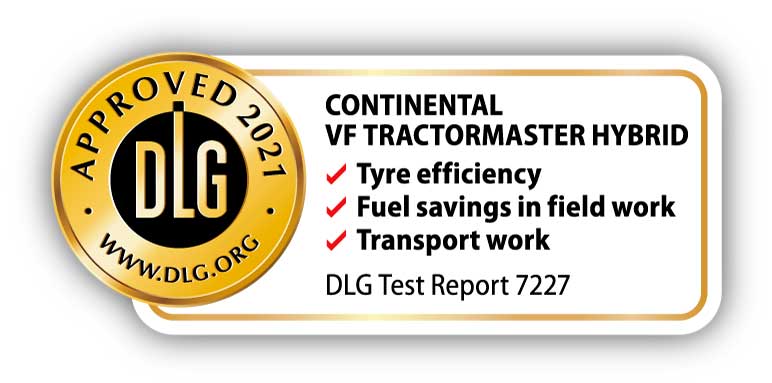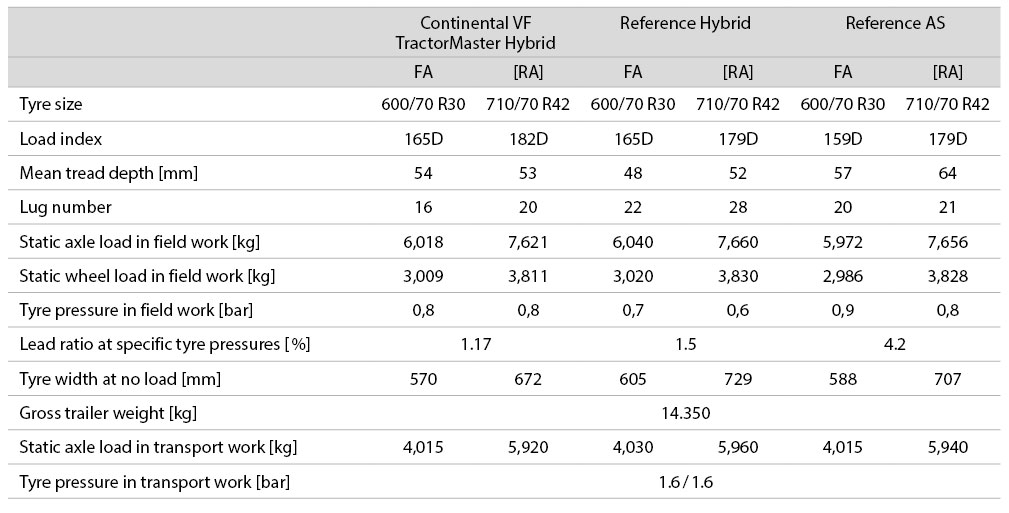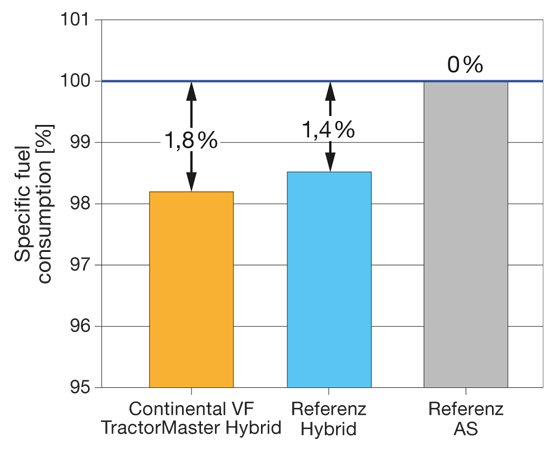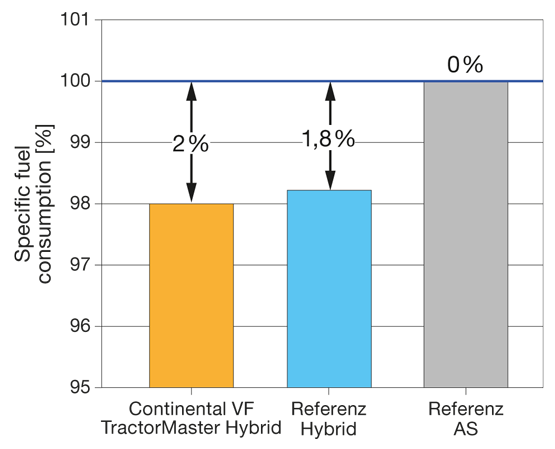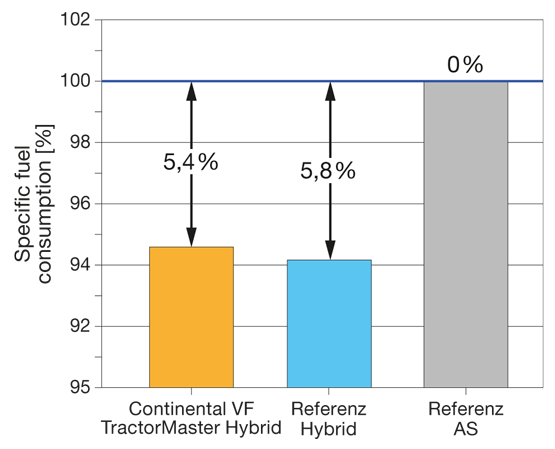Continental Agricultural tyres for tractors
DLG-APPROVED: "Performance review in premium class"
The quality mark
A test mark „DLG-APPROVED for individual criteria“ is awarded for agricultural products which have successfully fulfilled a scope-reduced usability testing conducted by DLG according to independent and recognised evaluation criteria. The test is intended to highlight particular innovations and key criteria of the test object. The test may contain criteria from the DLG test scope for overall tests, or focus on other value-determining characteristics and properties of the test subject. The minimum requirements, test conditions and procedures as well as the evaluation bases of the test results will be specified in consultation with an expert group of DLG. They correspond to the recognised rules of technology, as well as scientific and agricultural knowledge and requirements. The successful testing is concluded with the publication of a test report, as well as the awarding of the test mark which is valid for five years from the date of awarding.
The DLG test series „Efficiency assessment of premium tyres“ explores the performance of agricultural tyres in various scenarios. The tests measure the tractive performance and specific fuel consumption of a tractor while this is carrying out field and transport work. The tyre tested was a Continental VF TractorMaster Hybrid; the sizes tested were VF600/70 R30 (front axle) and VF710/70R42 (rear axle). The tread profile of this tyre is a hybrid pattern which combines the tread of a cleated agricultural tractor tyre (AS) with the tread pattern of a road tyre, which consists of a block pattern in the middle of the tread and massive agricultural lugs on both sides. This design gives the tyre self-cleaning abilities that are similar to those of a regular AS tyre. The tested tyre is also classified as a VF tyre (Very High Flexion), which means that it offers a substantially higher load capacity than a regular tyre – both at the same inflation pressure and at a reduced pressure.
This tyre was referenced to two equally sized tyres from premium brand manufacturers. The first reference tyre (referred to as ‘reference hybrid tyre’ in the following discussion) is a VF model with a hybrid pattern from a reputable manufacturer. The second reference tyre (AS reference) is an AS tyre from a reputable manufacturer which is classified as an IF model (Improved Flexion). This reference tyre was chosen to compare the test tyre’s performance with that of an AS tyre.
Other criteria were not investigated.
Assessment in brief
In the test discussed herein, the Continental VF TractorMaster Hybrid tyre, representing the design of a hybrid tread pattern, performed effectively in the field and on the road. The testers found that hybrid tyres are, in general, very efficient both in transport and field work. In the prevailing test conditions, they performed better than the regular AS tyres. The efficiency in the field is determined by using the traction transmitted into the ground as a parameter. By comparison, road work efficiency is measured by determining the specific fuel consumption. The results that the Continental VF TractorMaster Hybrid achieved in these tests were either on par with or better than the reference hybrid tyre, proving that it features state-of-the-art technology. The tyre offers great potential in terms of fuel and time savings by doing the same work faster.
Table 1: Assessment in brief
| DLG QUALITY PROFILE | Evaluation* |
|---|---|
| Tyre efficiency | +++++ |
| Fuel savings in field work | +++++ |
| Fuel savings in field work | ++++ |
* DLG Evaluation range:
+++ or better = meets, exceeds or significantly exceeds the established DLG standards
++ meets the legal requirements for marketability
- = failed
The Method
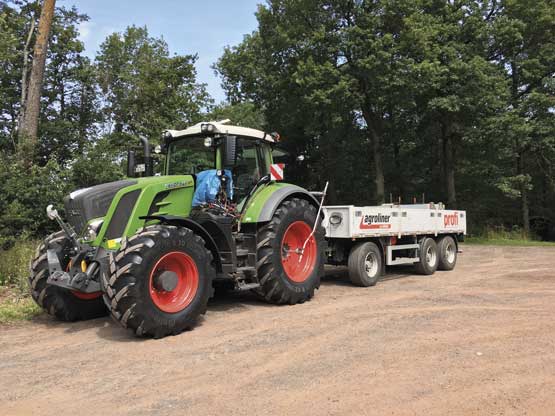
The test consisted of two partial tests, one focusing on field work and one on transport work. The tyres were fitted to a Fendt 828 Vario (referred to as the ‘test tractor’ in the following discussion). The tractor had a reversible fan which was set electronically to maximum throughput to ensure it absorbed a consistent amount of power in all the test runs, hence cutting the risk of being the possible cause for variations in the consumption rate. The tractor’s dead weight is 10 tonnes in transport work and 13.5 tonnes in field work for which it was ballasted with extra weights. The implement was simulated by a John Deere 8345R with a 16 tonne dead weight. Pulled by the test tractor, this is referred to as the ‘braked tractor’ in the following discussion. The transport work tests were carried out by the test tractor pulling a 14 tonne trailer that was loaded with a concrete block. This load corresponded to the pto output recorded on the test stand scaled comparable to the road cycles in the DLG PowerMix. The gross weight of this transport combination was more than 24 tonnes.
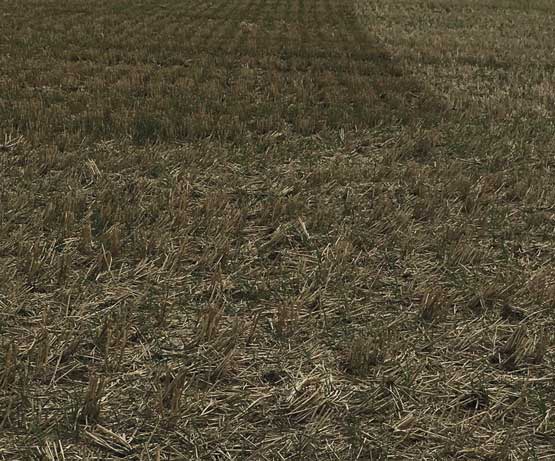
The field test was carried out in a field at the international cropping centre near Bernburg. The test took place in short and uniform wheat stubbles. The soil was black loess soil, the average moisture level was 15 % at a 10 cm depth. The tests described below were carried out on two consecutive days, ensuring that all tyres were tested in identical conditions. The braked tractor was attached to the test tractor by a steel rope to which a load cell was attached. This allowed the testers to apply a defined load on the test tractor thereby simulating a specific implement. This load was applied by braking the pulled tractor. The testers measured the distance covered, the forward speed and the fuel consumption using a Peiseler wheel and a Kral fuel meter. These measurements served as parameters to determine the tractive performance and the specific fuel consumption. The tyre pressures on the test tractor corresponded with the pressure chart of the manufacturer. All other parameters were identical for all test tyres.
To determine the performance of the individual tyres at 10 km/h in the first part of the field test, the testers chose to apply a tractive force that is typical for stubble work. This was applied by braking the pulled tractor. As the maximum tractive performance is measured over a course of several hundred metres, it is possible to calculate the specific consumption and tyre efficiency. In the second part of the field test, the test machine was operated at an initial speed of 6 km/h. As the workload increased progressively it was possible to measure the wheel slip relative to the current workload.
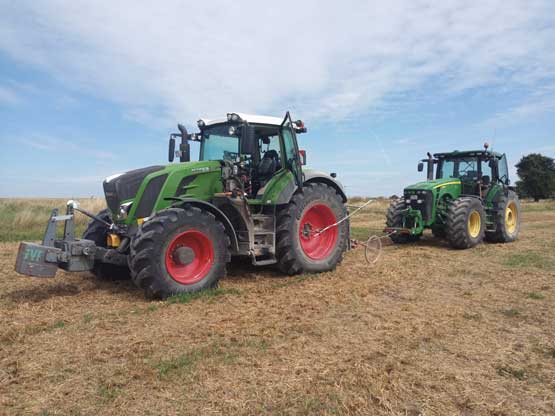
pulled the John Deere 8245R as the braked tractor
In the second part of the test – the transport test – the combination had to perform in two different scenarios: transport work on various slope gradients and transport work on flat land. The uphill test consisted of six uphill runs on slopes with various gradients which made different demands on the test machine. These courses reflected typical situations: long and gentle slope gradients with intermittent sections of flat land, plus short and steep courses. All uphill runs were carried out at full load. Yet the slope gradients differed by transmission ratio and hence by drive power transferred to the ground. In the runs in flat land, the performance is also tested at half load. Under comparable conditions, this offers some guidance for assessing the rolling resistance. Transport work on flat land was carried out at two different speeds – 50 km/h and 60 km/h. This setup is intended to demonstrate two things – the potential of fuel savings by reducing the forward speed on the one hand and the fact that the tyre performance varies depending on the forward speed on the other. All tests were carried out at similar outside temperatures and on dry roads. In all test runs, the tyres were inflated to the standard 1.6 bar pressure.
Detailed account of the test results
The test shows that in the prevailing conditions the Continental VF TractorMaster Hybrid – representing tyre designs with a hybrid tread pattern – is superior to a traditional AS tyre. specially in the field, the Continental VF TractorMaster Hybrid transmitted a significantly higher traction to the ground than an AS tyre.
This is reflected by using tyre efficiency as a parameter (Figure 5). This measure relates traction in the field to the pto output levels as measured on the DLG test stand. In the comparison with the reference hybrid tyre, the Continental VF TractorMaster Hybrid was on par with the reference hybrid tyre although the latter was inflated to a lower pressure – which should nominally be an advantage.
The high tyre efficiency is particularly reflected by the specific fuel consumption. This is obtained by dividing fuel consumption per hour by tractive performance. Figure 6 shows the specific consumption of the Continental VF TractorMaster Hybrid and of the reference hybrid tyre relative to the specific fuel consumption of the reference AS tyre.
This comparison reveals the potential of fuel savings offered by the hybrid tyre as an advantage over the regular AS tyre. At the same time, the Continental VF TractorMaster Hybrid even topped this result by delivering the highest fuel savings. These benefits translate into higher work rates and time savings
or lower consumption rates while doing the same type of work under the same conditions. The road transport test produced the anticipated results: the block tread in the middle of the tyre and the resulting road-friendly characteristics proved to be an advantage for the hybrid tyre over the regular AS tyre. The Continental VF TractorMaster Hybrid produced the best result during the uphill runs, achieving a slight advantage over the reference hybrid tyre and suggesting a clear savings potential over the regular AS tyre. The comparison of the Continental VF TractorMaster Hybrid and the reference hybrid tyre shows that the Continental product delivers a better performance in uphill work whereas the reference hybrid tyre produces slightly better results in flat land. As a result, both products are considered as equally good. Figure 8 gives an example of the savings potential, plotting the results at 60 km/h on flat land.
One explanation for the good performance of the hybrid tyres is that the block pattern in the middle of the tread increases tyre stiffness more than the lugs on a regular AS tyre. This stiffness makes the tread less likely to deform and mould into the rough surface of the road. A tyre experiences two types of wheel slip as it rolls on the ground: mould slip which refers to the deformation of the entire lug to mould into the surface and slide which refers to the tyre sliding on the road and the deformation of that part of the tread which contacts the road surface. The lugs that help transmit the drive power to the ground are stiffer on the hybrid tyre. This means this tyre develops less mould slip. This in turn improves grip by one third. Tyre slip is necessary for drive power to be transmitted to the ground; at the same time, though, drive power is lost by wheel slip.
Summary
The test proved that in the prevailing test conditions, the performance of hybrid tyres in general and that of the Continental VF TractorMaster Hybrid in particular is superior to that of a regular AS tyre. In the test, the Continental VF TractorMaster Hybrid test tyres (VF710/70R42 at the rear and VF600/70R30 at the front) showed that they are state-of-the-art technology in the premium tyre segment. In the field test, the test tyre and the reference hybrid tyre delivered the maximum tractive performance. Based on this, the specific fuel consumption was the lowest of all tyres tested. On the road, the results of the Continental VF TractorMaster Hybrid were on par with those achieved by the reference hybrid tyre, a result that underscores state-of-the-art tyre technology. In general, the test demonstrated that hybrid tyres offer great savings in terms of fuel costs and labour
costs – both in field and transport work.
Manufacturer and applicant
Contact
DLG TestService GmbH - Groß-Umstadt location • Max-Eyth-Weg 1 64823 Groß-Umstadt Germany • Tel.: +49(0)69 24 788-611 • tech@DLG.org

